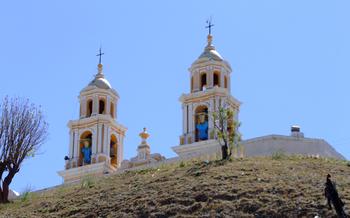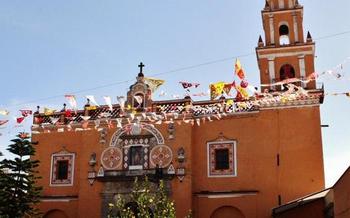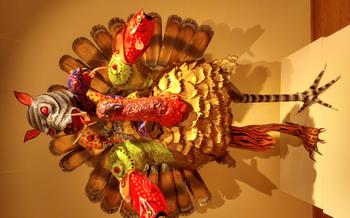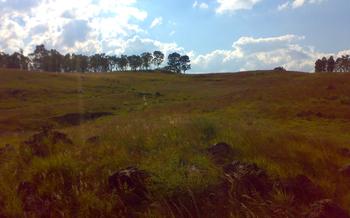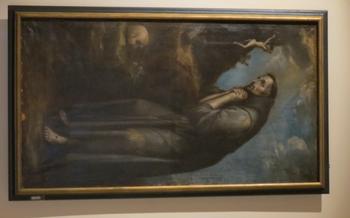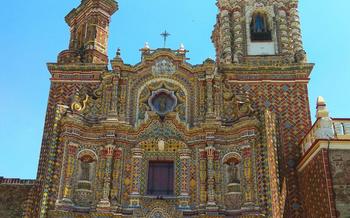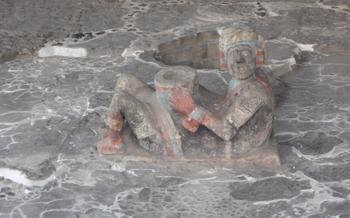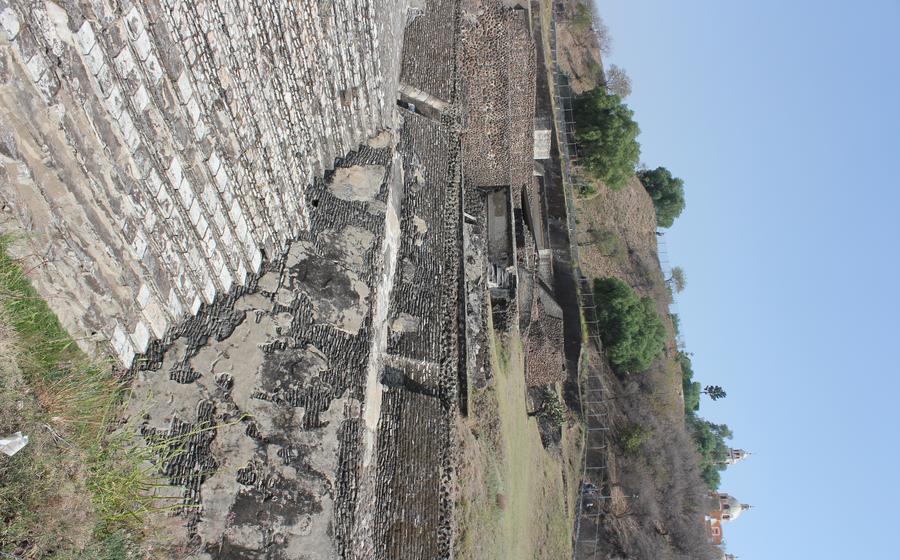
Great Pyramid of Cholula
- History of the Great Pyramid of Cholula
- Architectural Features of the Pyramid
- Religious Importance of the Pyramid
- Archaeological Explorations
- The Great Pyramid Museum: A Treasure Trove of Ancient Discoveries
- Other Notable Sites in Cholula
- Planning Your Trip to Cholula
- Climbing the Great Pyramid: A Thrilling Experience
- Tips for Exploring the Tunnels
- Learning About the Ancient Civilizations
- Cultural Experiences in Cholula
- Photography Opportunities
- Safety and Security
- Environmental Conservation
- Insider Tip: Exploring the Pyramid at Sunrise
History of the Great Pyramid of Cholula
The Great Pyramid of Cholula, also known as Tlachihualtepetl or "made-by-hand mountain," stands as a testament to the ingenuity and devotion of ancient Mexican civilizations. Its origins are shrouded in mystery, with legends attributing its construction to the mythical giant Xelhua, who is said to have built the pyramid as a stairway to heaven.
The pyramid's construction began around the 3rd century BCE and continued for centuries, passing through several phases of expansion and modification. It was initially a small structure built by the Olmecs, who were the first major civilization in the region. Later, the pyramid was enlarged and reshaped by the Toltecs, who added a new layer and dedicated it to the god Quetzalcoatl.
During the Aztec Empire, Cholula was a sacred city and a major pilgrimage site. The pyramid held a special place in Aztec mythology, and the Aztecs believed it was the home of the rain god Tlaloc. The pyramid was covered with a thick layer of white stucco, which gave it the appearance of a snow-capped mountain, earning it the name "Great White Mountain."
Archaeological excavations at the site have revealed numerous artifacts and relics, including ceramic figurines, obsidian tools, and human remains, providing valuable insights into the religious practices and rituals performed at the pyramid. The pyramid's significance as a sacred ceremonial center and its unique architectural features make it one of the most important archaeological sites in Mexico.
Architectural Features of the Pyramid
The Great Pyramid of Cholula stands as a remarkable architectural feat, showcasing unique design and construction methods that set it apart from other Mesoamerican pyramids. Constructed in several phases over a period of centuries, the pyramid exhibits an impressive scale and complexity. Its distinctive design features include a series of superimposed platforms, creating a stepped or terraced appearance. This construction technique allowed for the creation of a massive structure while maintaining stability and preventing collapse.
In comparison to other Mesoamerican pyramids, the Great Pyramid of Cholula stands out for its sheer size and unorthodox shape. Unlike the steep-sided pyramids with pointed tops commonly found in the region, Cholula's pyramid has a more rounded profile and a truncated top. This unique shape is attributed to the fact that it was built as a platform for a temple dedicated to Quetzalcoatl, the feathered serpent god. The pyramid's orientation is also significant, as it aligns with the cardinal directions, mirroring the belief in the sacredness of these alignments in Mesoamerican cosmology.
The integration of the pyramid with the surrounding natural landscape is another striking feature. Situated at the base of the Popocatepetl volcano, the pyramid was built to harmonize with the majestic backdrop of the mountain. Its terraces and platforms were designed to create a sense of unity with the natural environment, blurring the line between the man-made structure and the surrounding landscape.
Religious Importance of the Pyramid
The Great Pyramid of Cholula held profound religious significance for the ancient civilizations that inhabited the region. It served as a sacred ceremonial center, where priests and rulers performed rituals and worshipped various deities. The pyramid was particularly associated with Quetzalcoatl, the feathered serpent god who played a prominent role in Mesoamerican mythology. Devotees believed that Quetzalcoatl had a sacred temple atop the pyramid, where they offered prayers, sacrifices, and other forms of worship. Rituals and festivals were held at the pyramid to honor Quetzalcoatl and other deities, often involving elaborate processions, dances, and music. Offerings and sacrifices, including precious objects and even human lives, were made to the gods in exchange for their protection and blessings.
Archaeological Explorations
The Great Pyramid of Cholula has been the subject of extensive archaeological investigations since the 19th century. Early excavations revealed the pyramid's massive size and unique construction methods, but it was not until the mid-20th century that more systematic excavations began to uncover the pyramid's rich history and significance.
Archaeological projects in the 1960s and 1970s led by Ignacio Bernal and his team uncovered several important features of the pyramid, including the tunnels that run through its interior. These tunnels, which were likely used for religious rituals and ceremonies, provided valuable insights into the pyramid's function as a sacred ceremonial center.
More recent archaeological projects have focused on uncovering the pyramid's earlier history and its place within the larger context of Mesoamerican civilization. Excavations in the surrounding area have revealed evidence of settlements dating back to the Preclassic period (1200 BC - 200 AD), suggesting that the pyramid was part of a larger religious and cultural complex that developed over centuries.
Ongoing research and debates continue to surround the pyramid's significance and its relationship to other Mesoamerican pyramids. Archaeologists are working to understand the pyramid's exact age, the reasons for its abandonment, and its role in the political and religious landscape of ancient Mexico.
Despite the challenges faced by archaeologists working at the site, including the pyramid's massive size and the complex nature of its construction, the Great Pyramid of Cholula remains one of the most important and well-studied archaeological sites in Mexico. New discoveries are constantly being made, shedding light on the rich history and cultural significance of this ancient wonder.
The Great Pyramid Museum: A Treasure Trove of Ancient Discoveries
The Great Pyramid of Cholula is not only an architectural marvel but also home to a fascinating museum that showcases the rich history and cultural significance of the site. The museum, located at the foot of the pyramid, offers visitors an immersive experience into the world of the ancient civilizations that built and revered this colossal structure.
The museum's exhibits are meticulously curated, presenting a comprehensive collection of artifacts, relics, and interactive displays that bring the pyramid's story to life. Visitors can admire intricate pottery, finely carved sculptures, and ceremonial objects that once adorned the pyramid's sacred spaces. The museum also features detailed replicas of murals and paintings that once adorned the pyramid's walls, providing glimpses into the artistic and religious practices of the ancient Cholula inhabitants.
One of the highlights of the museum is the scale model of the Great Pyramid, which allows visitors to appreciate the sheer size and grandeur of this ancient structure. Interactive displays provide insights into the pyramid's construction techniques, the engineering feats achieved by the builders, and the significance of its placement within the landscape.
The museum also offers educational programs and guided tours that delve deeper into the history, archaeology, and cultural significance of the Great Pyramid. Visitors can learn about the myths and legends surrounding the pyramid's construction, the religious rituals and ceremonies that took place within its precincts, and the role it played in the political and economic landscape of ancient Mexico.
Other Notable Sites in Cholula
Besides the Great Pyramid of Cholula, the city offers a wealth of historical and cultural attractions. For those interested in colonial architecture, the city center boasts several impressive churches, including the 16th-century Franciscan monastery and the ornate Baroque-style Santa María Tonantzintla. The city is also renowned for its traditional markets, where visitors can find a vibrant array of local produce, handicrafts, and souvenirs. For a glimpse into Cholula's pre-Columbian past, the nearby archaeological sites of Cacaxtla and Tizatlan offer fascinating ruins and colorful murals. Day trip options from Cholula include visits to the historic city of Puebla, the ancient ruins of Cantona, and the scenic La Malinche National Park. With so much to explore, Cholula is a captivating destination that offers a diverse range of experiences for travelers of all interests.
Planning Your Trip to Cholula
To fully immerse yourself in the wonders of Cholula and the Great Pyramid, planning your trip is essential. Consider the following factors to ensure a smooth and enjoyable experience:
-
Best Time to Visit: Aim for the dry season, which typically runs from November to April, for ideal weather conditions. The city also hosts various cultural events and festivals throughout the year, so check the calendar to align your visit with these celebrations.
-
Transportation: Cholula is easily accessible by road or public transportation. If flying, the nearest international airport is in Puebla, located about 30 minutes away. From there, you can take buses, taxis, or ride-sharing services to reach Cholula.
-
Accommodation: Choose from a range of accommodation options in Cholula, catering to different budgets and preferences. From budget-friendly hostels to charming boutique hotels, you're sure to find a place that suits your needs.
-
Itinerary Planning: Allocate at least a full day to explore the Great Pyramid, including climbing to the top and visiting the museum. Consider adding extra days to visit other attractions in Cholula and nearby cities like Puebla.
Climbing the Great Pyramid: A Thrilling Experience
The Great Pyramid of Cholula presents an exhilarating challenge for adventurous travelers who seek to conquer its ancient slopes. Visitors are permitted to climb the pyramid, offering a unique opportunity to experience its grandeur up close and enjoy breathtaking views from the summit. However, it's crucial to prioritize safety and take necessary precautions before embarking on this adventure.
Safety Guidelines and Precautions:
- Ascend and descend the pyramid using designated staircases, avoiding unstable or steep sections.
- Wear appropriate clothing and footwear, such as comfortable shoes with good traction, to navigate uneven surfaces.
- Stay hydrated by carrying sufficient water, especially during hot weather.
- Be mindful of your surroundings and maintain a safe distance from the edges of the pyramid to prevent falls.
- Respect the historical significance of the pyramid by refraining from climbing or touching fragile structures or artifacts.
Recommended Clothing and Footwear:
- Opt for lightweight, breathable clothing suitable for warm weather conditions.
- Wear comfortable, closed-toe shoes with non-slip soles for better stability on the pyramid's steps.
- Avoid loose clothing or dangling accessories that could get caught or pose a safety hazard.
Physical Challenges and Considerations:
- The climb to the top of the pyramid requires moderate physical exertion and endurance.
- Be prepared for uneven steps, narrow passages, and steep inclines, which may be challenging for individuals with mobility issues.
- Take breaks as needed to rest and catch your breath, especially if you experience any discomfort or fatigue.
Enjoying the Views from the Top:
- Upon reaching the summit, take a moment to soak in the panoramic vistas that stretch out before you.
- Marvel at the intricate patterns and designs adorning the pyramid's surface, a testament to the skill and artistry of ancient builders.
- Capture breathtaking photographs to document your unforgettable experience atop one of Mexico's most iconic landmarks.
Tips for Exploring the Tunnels
The Great Pyramid of Cholula contains a network of tunnels that offer a unique and immersive experience for visitors. To make the most of your exploration, here are some essential tips:
-
Guided Tours: Guided tours are highly recommended for exploring the tunnels. Experienced guides provide valuable insights into the history, architecture, and significance of the tunnels, enhancing your understanding of this ancient site.
-
Flashlights or Headlamps: The tunnels are dimly lit, so bring a flashlight or headlamp to illuminate your path. This will help you navigate safely and ensure you don't miss any interesting details.
-
Narrow Passages: Be prepared for narrow passages and tight spaces within the tunnels. Some sections may require you to crouch or crawl, so wear comfortable clothing that allows for easy movement.
-
Respect the Tunnels: Remember that the tunnels are a historically significant part of the Great Pyramid. Avoid touching or damaging the walls, artifacts, or any fragile structures you may encounter.
Learning About the Ancient Civilizations
To delve deeper into the captivating history of the Great Pyramid of Cholula and the ancient civilizations that constructed it, several avenues of exploration present themselves. On-site guides, with their wealth of knowledge and expertise, can provide illuminating insights into the significance of the pyramid and the lives of its builders. Their narratives bring the past to life, offering a deeper appreciation for the cultural and historical context of this awe-inspiring monument.
Beyond the guidance of on-site experts, a plethora of resources exist to further enrich your understanding. Books, documentaries, and online articles offer comprehensive explorations of the ancient civilizations that inhabited this region, shedding light on their social structures, religious beliefs, and technological advancements. These resources provide a broader perspective, allowing you to contextualize the Great Pyramid of Cholula within the wider tapestry of Mesoamerican history.
To fully immerse yourself in the legacy of these ancient cultures, consider visiting other Mesoamerican archaeological sites, such as Teotihuacan, Monte Alban, or Palenque. These sites, each with its own unique characteristics and historical significance, offer a tangible connection to the civilizations that once flourished in this region. By exploring these diverse sites, you can gain a more comprehensive understanding of the cultural and historical significance of the Great Pyramid of Cholula.
Finally, engaging with the local communities and their traditions offers a unique opportunity to connect with the living legacy of ancient civilizations. Through conversations with locals, participation in traditional ceremonies, and exploration of local markets and crafts, you can gain insights into the continuity of cultural practices and the enduring influence of ancient traditions in modern-day Mexico.
Cultural Experiences in Cholula
Cholula offers a rich tapestry of cultural experiences that transport visitors back in time. Immerse yourself in the vibrant traditions and vibrant atmosphere of this ancient city. Witness traditional dance performances that pay homage to the region's indigenous heritage, accompanied by enchanting music that resonates through the streets.
Indulge in the delectable local cuisine, savoring the flavors of traditional dishes that have been passed down through generations. From mouthwatering street food to fine dining experiences, Cholula's culinary scene tantalizes taste buds with its unique blend of flavors and spices.
Discover the intricate artistry of local artisans, who create beautiful handicrafts, pottery, and textiles. Shop for souvenirs that capture the essence of Cholula's cultural heritage and support the talented artisans who keep these traditions alive.
Engage with the friendly locals, who are renowned for their warm hospitality and welcoming spirit. Learn about their customs, traditions, and way of life, gaining a deeper understanding of the rich cultural tapestry that makes Cholula so special.
Photography Opportunities
The imposing Great Pyramid of Cholula offers a treasure trove of stunning photo opportunities for visitors with a keen eye for capturing the beauty and grandeur of ancient architecture. The pyramid's sheer size and impressive presence make it an ideal subject for wide-angle shots that showcase its scale and majesty.
Climbing to the top of the pyramid rewards photographers with breathtaking panoramic views of the surrounding landscape. The vast expanse of the Puebla Valley, dotted with villages, fields, and distant mountains, creates a stunning backdrop for capturing the pyramid's dominance over its surroundings.
For those seeking more creative angles, exploring the pyramid's tunnels and chambers unveils a unique perspective of its intricate architecture. The interplay of light and shadow within these subterranean spaces can produce dramatic and atmospheric images that convey the mystery and wonder of the ancient civilization that built this remarkable structure.
To capture the essence of the pyramid's cultural significance, photographers should not shy away from including people in their shots. Local vendors selling traditional crafts or visitors climbing the pyramid's steps add a human element that brings the site to life and conveys its enduring importance to the people of Cholula.
With its rich tapestry of colors, textures, and perspectives, the Great Pyramid of Cholula is a photographer's paradise. Whether capturing the sweeping vistas from the top or exploring the hidden depths of the tunnels, visitors can unleash their creativity and capture unforgettable images that will forever immortalize their journey to this awe-inspiring ancient wonder.
Safety and Security
Visiting Cholula is generally safe, but as with any travel destination, it's essential to take precautions to ensure your well-being. Be aware of your surroundings, especially in crowded areas. Avoid walking alone at night, and opt for well-lit streets. Keep your valuables secure and make copies of important documents like your passport and visa. Learn a few basic Spanish phrases to communicate with locals and ask for assistance if needed. Respect local customs and traditions, and dress appropriately when visiting religious sites. Purchase travel insurance to cover unexpected events and emergencies. Keep emergency contact numbers handy, including the local police and your embassy or consulate.
Environmental Conservation
As responsible travelers, it's essential to minimize our environmental impact while exploring the Great Pyramid of Cholula. Sustainable travel practices are crucial to preserving the site's natural beauty and cultural significance. Here are some tips for eco-conscious exploration: - Reduce plastic waste by bringing reusable water bottles and avoiding single-use plastics like straws and plastic bags. - Dispose of waste properly in designated bins to prevent littering. - Support local conservation initiatives by learning about and contributing to efforts to protect the pyramid and its surroundings. - Educate yourself and others about the importance of environmental conservation and cultural heritage preservation. By embracing sustainable practices, we can ensure that future generations can continue to appreciate the wonders of the Great Pyramid of Cholula.
Insider Tip: Exploring the Pyramid at Sunrise
To truly experience the magic of the Great Pyramid of Cholula, plan your visit for sunrise. As the first rays of light illuminate the ancient structure, you'll be greeted by breathtaking views and a sense of tranquility that's hard to find during the day. With fewer crowds at this time, you can soak in the beauty of the pyramid and the surrounding landscape without distractions.
As the sun rises over the horizon, the pyramid takes on a warm, golden glow that's simply mesmerizing. It's a photographer's dream, with endless opportunities to capture stunning images. Plus, the early morning light casts long shadows that create dramatic effects, adding to the overall beauty of the scene.
But the visual spectacle isn't the only reason to visit the pyramid at sunrise. The atmosphere at this time is truly magical. As you climb the steps to the top, you'll feel a sense of peace and connection with the ancient civilization that built this incredible structure. It's a moment that will stay with you long after your trip.
If you're an early riser and an avid photographer, make sure to add a sunrise visit to the Great Pyramid of Cholula to your itinerary. It's an experience that won't disappoint.
Pro tip: To enhance your sunrise experience, consider bringing a pair of binoculars for birdwatching. The area surrounding the pyramid is home to a variety of bird species, and the early morning hours are a great time to spot them.
